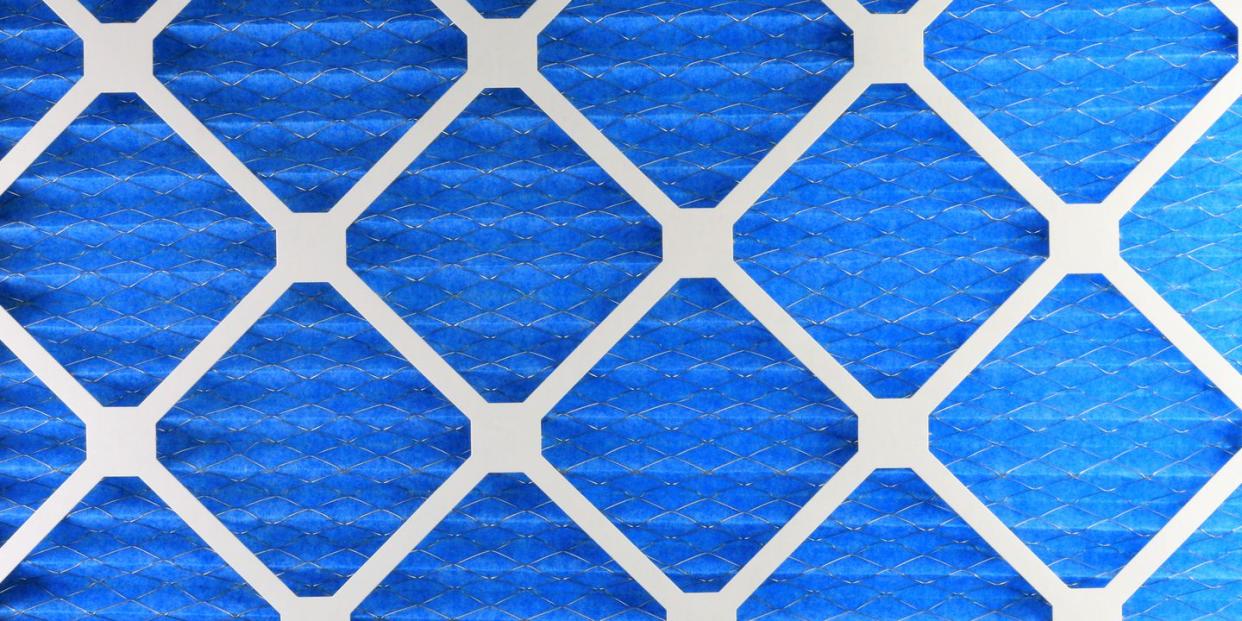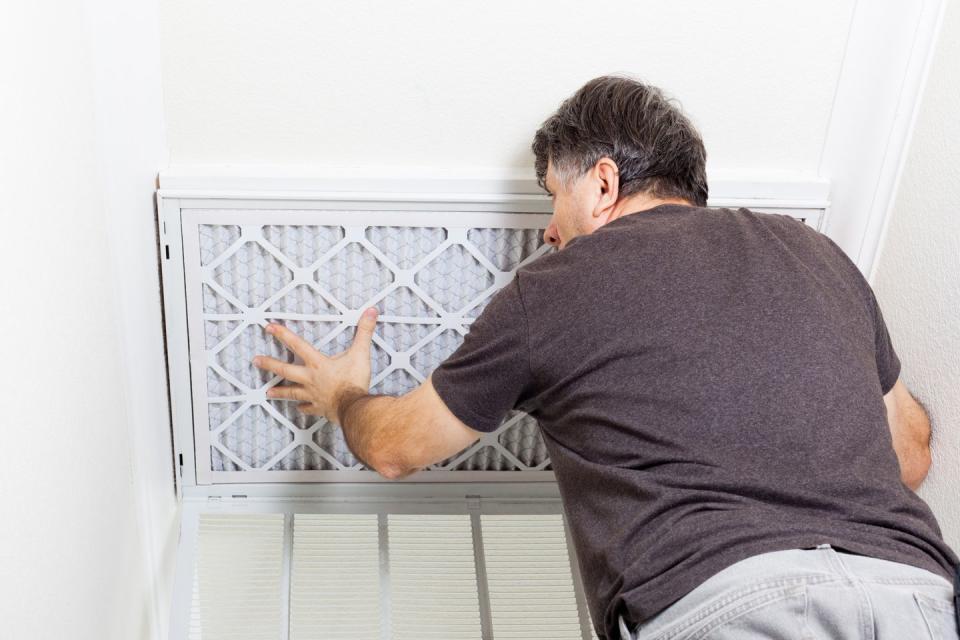A Breath of Fresh Air: A Smart Buyer's Guide to Air Filters

The forced-air heating and cooling systems that keep our homes comfortable year-round require very little maintenance. In most cases, all you must do to keep the equipment operating at peak efficiency is have the system inspected annually by a professional HVAC technician, and change the filter on a regular basis.
Changing the filter is incredibly easy to do, but also extremely important because a clogged, damaged, or ill-fitting filter can cause all sorts of problems ranging from dirty, polluted indoor air to severely restricted airflow, which puts undue strain on the blower motor.
We’ll take a look at the three most popular types of home air filters, and then discuss how to properly install them.
Air Filter Types
The simplest of all air filters are fiberglass filters. These are the disposable types that have a cardboard frame and woven fiberglass core. They’re available in a wide range of sizes and are usually about 1 inch thick. And at only a buck apiece, fiberglass filters are certainly affordable, but they only filter out the largest particulates and offer the bare minimum protection from dirty air.
Pleated filters provide better filtration than fiberglass filters, and they last longer. They have durable polyester or cotton folds (pleats) that greatly increase the surface area, allowing the filter to trap more and finer particulates. And pleated filters come in thicknesses ranging from 1 inch to 5 inches; the thicker the filter, the better it cleans the air. However, you may need to hire an HVAC technician to alter your system in order to install a thicker filter. A 1-inch-thick pleated filter costs about $5.
Electrostatic air filters are electro-magnetically charged to attract and trap small airborne particulates, including fine dust and allergens, which would pass right through fiberglass and pleated filters. Most electrostatic filters must be replaced at regular intervals, but you can also buy ones that are washable and reusable. A standard-size electrostatic filter costs between $40 and $80.
For the ultimate in clean indoor air, consider a whole-house electronic air purifier. This isn’t a filter, but instead a separate piece of equipment that gets connected directly to your existing HVAC system. Once installed, the electronic purifier will remove up to 99 percent of all dust and allergens.
Prices vary widely, based on size and capacity, but whole-house air purifiers typically start at around $500 or so.
How To Install an Air Filter

There are very few home-maintenance chores that only take a few seconds to complete, but changing an air filter is one of them. For most forced-air systems all you need to do is pull out the old filter and slide in the new one. However, that doesn’t mean it can’t be done wrong. In fact, it’s done wrong all the time.
First, make sure you’re installing the correct size filter. There are lots of different sizes, so it’s easy to buy the wrong one. And a filter that’s even a little bit too small will allow unfiltered air to slip pass and blow into your home.
Also, be sure the filter is facing the correct direction. Most filters have an arrow printed on them to indicate the direction of airflow. If installed backwards, the filter will block the flow of air, instead of cleaning it.
💡Use an indelible maker to draw an arrow on the side of the furnace as a reminder of the correct way to install the filter.
Now, in most cases, you’ll remove and discard the old filter and replace it with a new one. However, if using a washable filter, remove it, clean it according to the manufacturer’s recommendations, and then replace it. Just be sure the filter is bone dry before reinstalling it.
Finally to ensure your indoor air stays clean, you must regularly change the filter. Now, it’s difficult to say exactly how often you must change the filter because so much depends on the type of filter, how often the system runs, the size of your home and household, and whether or not you have pets.
In certain situations you may need to change the filter monthly. Other times you can wait three to four months. The best advice is to ask a HVAC technician who will have the most accurate recommendation for your specific home, family, and neighborhood. But if the filter is noticeably gray and your home is dustier than usual, then you're likely in need of a new filter.
('You Might Also Like',)

